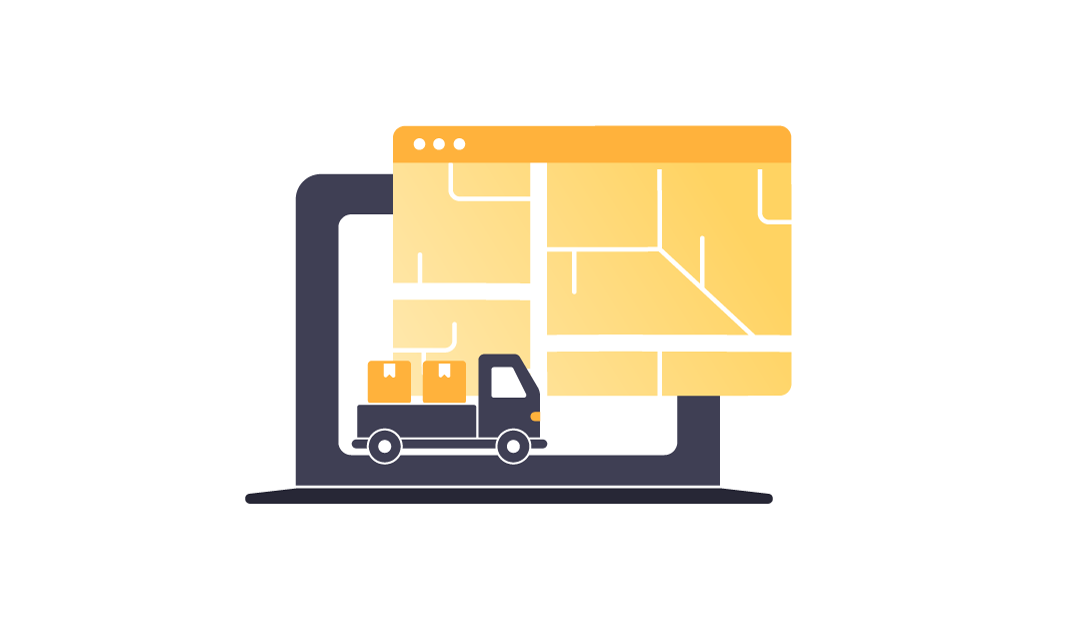Integrating Application Programming Interfaces (APIs) in transport and logistics is crucial for operational efficiency and reliability, the key drivers of business growth. Forbes corroborates this, highlighting that companies employing APIs see a significant financial benefit — a 12% boost in market value over their non-API-using competitors.
That said, you must leverage the best APIs to streamline your operations and enhance your company’s economic standing. In this article, we have compiled the top 10 APIs that logistics and transportation businesses can leverage. We will discuss the APIs’ functions, usability, advantages, and limitations to help you make informed decisions.
What are Logistics and Transportation APIs?
Logistics and Transportation APIs are digital interfaces that allow different software systems to communicate with each other in the domain of logistics and transportation services. These APIs serve as a bridge between various logistics software, tools, and platforms, enabling them to exchange data and perform complex tasks without human intervention. Key features and functions of Logistics and Transportation APIs include:
- Real-time Tracking: APIs allow businesses and customers to track shipments and vehicles in real-time, ensuring visibility into delivery locations and statuses.
- Route Optimization: These APIs calculate the most efficient delivery routes, which save time and reduce fuel costs.
Rate and Quote Calculation: APIs offer real-time pricing and quoting for transportation services, simplifying planning and budgeting for businesses and customers. - Fleet Management: They help manage and optimize a company’s vehicle fleet, including maintenance schedules.
- Weather and Traffic Data: Access to weather and traffic data assists in making informed decisions about routing and delivery timing.
- Integration with E-commerce Platforms: These APIs seamlessly integrate with e-commerce systems, automating order processing and tracking.
- Customer Notifications: APIs can trigger automated notifications for customers, informing them about the status of their shipments.
Comparing Logistics and Transportation APIs
Now, let’s explore some of the leading APIs in logistics and transportation and compare their capabilities.
Google Maps API
The Google Maps API, renowned for its precision and adaptability, furnishes real-time data on routes, directions, and traffic conditions. When you integrate this API into your systems, you optimize your delivery routes, reducing travel time and fuel consumption. This not only saves costs but ensures timely deliveries, enhancing your overall customer experience.
Some of the key features of the product are:
- Full 360° street view
- Navigation and route guidance
- Location search functionality
- Real-time traffic updates
- Multi-mode route planning
Ease of Use: Google Maps APIs have clear documentation and are beginner-friendly for those with API experience.
Limitations: Many websites and apps can initially use Google Maps API for free. But, if you consistently generate significant traffic, e.g. 25,000+ map loads daily for over 90 days, you might have to pay for extra usage.
Benefits: Enhances transportation and delivery using precise geospatial data, while dynamically monitoring fleets, devices, and assets.
Pros
- Comprehensive maps data
- Multi-platform compatibility
- Robust documentation and community support
- Integration with other Google services
- Free trial
Cons
- Google bills the maps API based on the number of requests made, with different charges for each request type
- Understanding and managing API licensing can be complex
Waze API
The Waze API offers live traffic updates, directions, and road conditions. Leveraging this API helps you plan routes and make real-time adjustments to avoid congestion and obstacles, resulting in improved operational efficiency and superior customer service.
Integrating the Waze API will deliver the following features:
- Voice-guided navigation with street names
- Real-time traffic updates
- Toll avoidance
- Integrated destination search (Nationwide)
- Multilingual support
Ease of Use: Waze APIs are user-friendly for experienced developers, with a detailed wiki and robust community support available.
Limitations: Waze relies on community-sourced data, which can result in delays in providing accurate travel time estimates in areas with low user activity.
Benefits: Developers can utilize the Waze API for real-time traffic updates on specific areas or routes, as well as access historical data and forecast future traffic conditions.
Pros
- Real-time traffic data
- User-generated data on road conditions, accidents, and more
- Multi-platform compatibility
- Robust documentation, wiki, and community support
Cons
- User-generated data may not always be accurate
- Limited geographic coverage
- Less customization
USPS Logistics API
The USPS Logistics API, provided by the United States Postal Service, simplifies shipping and logistics tasks. It offers services like address verification, package tracking, and shipping rate calculations, making it easy for businesses to incorporate USPS services into their applications, simplifying shipment management.
Integrating USPS API will help you:
- Track packages
- Schedule carrier pickups for returns
- Validate addresses
- Calculate shipping rates for domestic and international shipments
Ease of Use: Configuring the USPS API is challenging due to its limited resources, making it unsuitable for beginners.
Limitations: The USPS APIs lack example code and have weak documentation, making them challenging to use.
Benefits: It is free to use and one of the best APIs for experienced retailers and developers.
Pros
- USPS Logistics API boasts dozens of APIs for improved integration
- Free to use
- Easily integrates with e-commerce platforms and systems
Cons
- No chat support for USPS address APIs, and the overall support is subpar
- Primarily for domestic shipping
Routific API
The Routific API is ideal for companies heavily reliant on delivery routing and optimization. This API can help your business optimize route planning, considering factors like traffic, vehicle capacity, and time windows. Integrating this API also helps significantly reduce transportation costs and improve productivity.
Features include:
- Routes planning
- Live GPS tracking
- Customer notifications
- Proof of delivery
- Delivery tracking link
- Delivery analytics
Ease of Use: The Routific API has a clear structure, and the documentation is comprehensive and well-organized with all the necessary information.
Limitations: Some essential features like live tracking require a higher plan.
Benefits: It makes it easy to optimize routes when delivering emergency food and perishable goods directly to doorsteps.
Pros
- Easily create multi-stop routes without stress
- Effortlessly expand delivery operations with business growth
- Optimize routes with customer-friendly time windows
- Reduce costs on fuel and driver wages
- Live tracking and automated ETA notifications
Cons
- Routific is designed for delivery routing and may not be suitable for other purposes
- The pricing could be a challenge for small businesses or startups
- Integration may pose complexity for certain developers
Samsara API
The Samsara API provides a comprehensive range of features for tracking and managing fleets, assets, and equipment. It includes real-time tracking, telematics, sensor data, and compliance tools for transportation and logistics operations. Additionally, the Samsara API offers valuable insights into driver behavior, enabling logistics firms to streamline operations, enhance safety, and reduce accidents.
Integrating Samsara API will deliver the following features:
- Enhancing driver safety and performance
- Fleet maintenance and optimization
- Real-time alerts and reporting
- On-demand video
- Instant snapshots
- GPS tracking
Ease of Use: Samsara is easily integrated, quick to set up, and user-friendly.
Limitations: The main drawback for small businesses with Samsara is the minimum requirement of three vehicles. Additionally, there’s a significant downside with Samsara’s lengthy 36-month contract term.
Benefits: Samsara is ideal for fleet managers seeking a scalable, all-inclusive tracking solution.
Pros
- Real-time fleet tracking
- Wide industry applicability
- Seamless third-party integration
- Comprehensive maintenance and management tools
Cons
- Lack of online pricing
- No free trials
- Minimum three-year commitment with three vehicles
DHL API
The DHL API provides various services to enhance land transportation efficiency. It enables access to DHL’s global network, offering features like location finder, shipment tracking, real-time tracking, and rate calculations. Businesses can seamlessly integrate DHL services into their systems, bolstering their logistics capabilities.
Key features of DHL include:
- Label creation
- Real-time tracking
- Location finder for service points
- Cross-border tax and fee calculation
- Address validation for dispatch and supply chain management
Ease of Use: The DHL API is user-friendly and seamlessly integrates with websites and mobile apps.
Limitations: DHL’s limited international availability may hinder shipping to certain countries.
Benefits: The DHL API streamlines shipping for businesses by integrating DHL’s services, enhancing efficiency.
Pros
- Free to use
- Easily integrates with e-commerce platforms and systems
- Robust tracking and notification features for real-time monitoring
- Well-documented for seamless integration
Cons
- DHL services can be relatively expensive
Route4Me API
The Route4Me API is a robust tool for companies heavily reliant on route optimization. This integrated telematics platform empowers dispatchers and field service personnel to plan, manage, and execute delivery or pickup routes efficiently. By incorporating this API, you can optimize complex delivery routes, reduce mileage, and improve resource allocation.
Route4Me API delivers the following features:
- Advanced route optimization algorithms
- Real-time GPS tracking
- Driver and vehicle reassignment
- Route reversal and swapping
- Customer notifications and accurate arrival time estimation
- Geofencing with advanced geocoding
- Dynamic route planning for specific business requirements
Ease of Use: Developers with API experience will have no problem integrating Route4Me API.
Limitations: Pricing plans are limited to 10 team members, with extra costs for additional members.
Benefits: Route4Me optimizes route planning, saving time and fuel costs. It’s flexible for adapting to dynamic business needs.
Pros
- Deployable anywhere
- Provides real-time GPS vehicle tracking for efficient fleet management
- Offers route reassignment, driver and vehicle swaps, and accurate estimated time of arrival
Cons
- Pricing plans are expensive with add-on costs
- Free customer support is conditional and may require extra fees
- Pricing plans are limited to 10 team members with additional costs
OptimoRoute
OptimoRoute is a cloud-based software solution designed for route optimization and planning. It is primarily used by businesses and organizations in transportation, delivery services, and logistics to streamline operations and improve efficiency. By integrating the OptimoRoute API, you can plan and optimize routes for your vehicles and drivers, improving efficiency in your operations.
Integrating this API delivers the following features:
- Route optimization
- Workload distribution
- Customizable routing parameters
- Customer feedback collection
- Live driver tracking
- Proof of delivery with e-signatures, photos, and notes
Ease of Use: Developers with API experience will have no problem integrating OptimoRoute API.
Limitations: OptimoRoute restricts users to one depot location, which can impact operational planning.
Benefits: Improved customer satisfaction through proof of delivery and notifications.
Pros
- Customizable route options
- Proof of delivery
- Automatic customer notifications
- Extended route planning
- Live driver tracking
- Detailed reports and analytics
Cons
- You are limited to one depot
- Occasional suboptimal routes
- Outdated maps and rural address issues
- Occasional planning glitches
FedEx API
For land transportation needs, the FedEx API is a popular choice. It allows businesses to integrate FedEx Express, FedEx Ground, and FedEx Freight services into their eCommerce, retail, or order management systems. This integration leverages FedEx’s extensive network to streamline shipping processes and ensure on-time deliveries.
Integrating the FedEx API will deliver these features:
- Create shipments and manage courier pickups
- Address validation
- Create, manage, and process LTL shipments
- International shipping regulatory documents
- Access shipping rates, delivery dates, and transit times
- Track shipments and generate shipping labels
Ease of Use: Integrating the FedEx API is straightforward, simplifying use and management.
Limitations: The FedEx API has usage restrictions, including daily request limits and data access constraints.
Benefits: The FedEx Shipping API offers real-time tracking, cost reduction through dynamic pricing, and improved last-mile delivery management for streamlined operations.
Pros
- Known for on-time delivery
- Allows real-time updates for customers
- Well-documented for easy integration
Cons
- FedEx can be pricier, especially for international shipping
- The pricing structure may need help understanding
- Smaller accounts may experience support challenges
Driv.in
Driv.in is a SaaS logistics solution facilitating efficient delivery fleet management. The company generates optimal routes, sequences orders, and provides real-time tracking and performance data. By leveraging this API, you can enhance visibility and enable efficient vehicle management, ensuring prompt action in case of any delivery issues.
Some of the features you’ll get integrating Driv.ain API are:
- Custom route planning
- Real-time fleet monitoring
- Document management
- Real-time insight
- Streamlined communication
- Conflict management and resolution
- Smart notifications
- Customized daily reports
Ease of Use: Driv.in is an intuitive and easy-to-use tool, not just for drivers, but also for office-bound teams, administrators, and analysts.
Limitations: Some users about the basic report and search functions.
Benefits: Driv.in delivers a 30% reduction in transportation costs, 90% faster planning, enhanced driver performance, real-time visibility, improved customer service, global scalability, and seamless customer notifications and reporting.
Pros
- Easy to set up and use
- Multi-platform compatibility
- Integrate with e-commerce platforms
- Excellent customer service
Cons
- The cost is on the high side
- Page experiences slowdown with a high order volume
Over To You
These logistics and transportation APIs offer a range of features to enhance your operations and improve customer satisfaction. Whether you’re looking for route optimization, real-time tracking, or efficient fleet management, there’s an API to meet your specific needs. Choose the one that aligns with your business requirements and take your logistics and transportation processes to the next level. If you need help with integration or would like a software product tailor-made for your business, our experts at ORIL can help.







